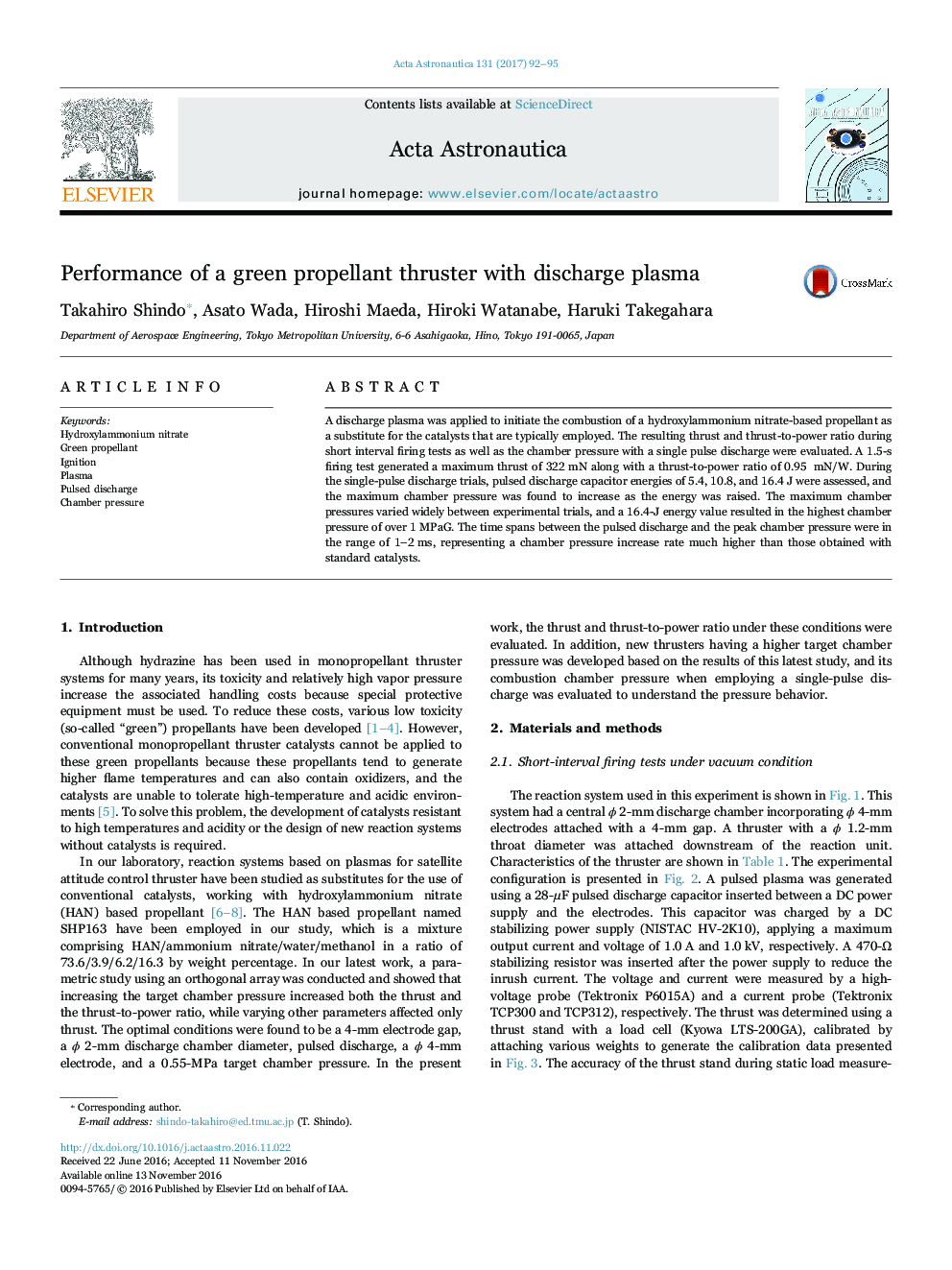| Article ID | Journal | Published Year | Pages | File Type |
|---|---|---|---|---|
| 5472201 | Acta Astronautica | 2017 | 4 Pages |
Abstract
A discharge plasma was applied to initiate the combustion of a hydroxylammonium nitrate-based propellant as a substitute for the catalysts that are typically employed. The resulting thrust and thrust-to-power ratio during short interval firing tests as well as the chamber pressure with a single pulse discharge were evaluated. A 1.5-s firing test generated a maximum thrust of 322Â mN along with a thrust-to-power ratio of 0.95Â mN/W. During the single-pulse discharge trials, pulsed discharge capacitor energies of 5.4, 10.8, and 16.4Â J were assessed, and the maximum chamber pressure was found to increase as the energy was raised. The maximum chamber pressures varied widely between experimental trials, and a 16.4-J energy value resulted in the highest chamber pressure of over 1 MPaG. The time spans between the pulsed discharge and the peak chamber pressure were in the range of 1-2Â ms, representing a chamber pressure increase rate much higher than those obtained with standard catalysts.
Related Topics
Physical Sciences and Engineering
Engineering
Aerospace Engineering
Authors
Takahiro Shindo, Asato Wada, Hiroshi Maeda, Hiroki Watanabe, Haruki Takegahara,
